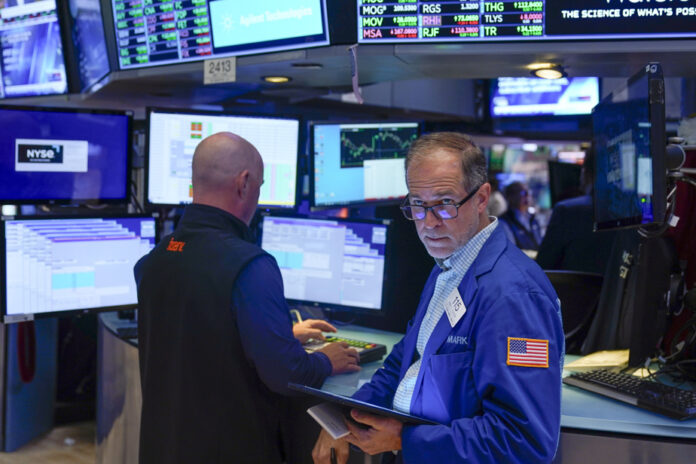(New York) The New York Stock Exchange ended in mixed order on Friday, the market finally showing itself hesitant after having initially reacted well to the American employment figures, on the eve of a holiday weekend (Labor Day ).
The Dow Jones slipped 0.33%, the NASDAQ index fell 0.02% and the broader S
Initially, the New York market had welcomed the monthly US employment report, according to which the US economy created 187,000 jobs in August, above the 170,000 expected by economists.
This upward surprise was tempered by the downward revision of the June and July figures by 110,000 in total.
In addition, the unemployment rate rose to 3.8% from 3.5% previously, its highest level in a year and a half, largely due to the arrival on the labor market of new workers. The participation rate thus rose to its highest since February 2020, i.e. before the coronavirus pandemic.
“The jobs report is consistent with our projections that the labor market will continue to slow and the (US) economy will go through a moderate recession around the end of the year,” commented Nancy Vanden Houten. , from Oxford Economics.
Initially, operators revised up the probability that the American central bank (Fed) would leave its rates unchanged until the end of the year, an assumption that appealed to the market.
But as the session went on, the enthusiasm moderated, especially after the publication of the monthly ISM index of activity in the manufacturing sector.
For Tom Cahill of Ventura Wealth Management, more than the core index, which rose to 47.6 points in August from 46.4 in July but continues to indicate a contraction in activity, investors raised the jump in the indicator of prices paid by the sector.
It came out well above that of July, but also the forecasts of economists, which may cause concern about the trajectory of inflation.
In the aftermath, bond rates, which had eased at the start of the session, rose. The yield on 10-year US government bonds thus stood at 4.17%, compared to 4.10% the day before closing.
As for the flagship indices of the equity market, they ran out of steam, the NASDAQ, which remained on five positive sessions in a row, even closing in the red, after taking profits on a few star stocks, such as Nvidia (-1.71% ) or Tesla (-5.06%).
“If you’re a trader, you’ve just had a pretty good week and a three-day weekend comes around, you take some profits,” Tom Cahill deciphered.
On the eve of the three public holidays, “volumes were low,” said Maris Ogg of Tower Bridge Advisors. Also, “some didn’t want to stay exposed” before this footage and sold out, she said.
The reputation of September, the worst month of the year on average for equities, did not help, added the analyst, on this first day of the month.
On the odds, the computer manufacturer Dell sparked (21.25%), after the publication of better than expected quarterly results. The Round Rock (Texas) group also reported annual forecasts higher than those of the market and insisted on its ambitions in artificial intelligence (AI).
Semiconductor specialist Broadcom suffered (-5.46%), despite results that beat expectations. Investors were offended by the group’s forecast, which was seen as cautious in an AI-driven industry.
Its competitor Intel, on the other hand, did well (4.18%), still driven by encouraging statements on Thursday from its general manager, Pat Gelsinger, according to which the group’s market shares are on the rise.
The Amgen laboratory (0.14%) rose slightly, after the announcement of an agreement with the American competition authority, the FTC, which paves the way for the acquisition of the pharmaceutical company Horizon Therapeutics (2.27% ), announced in December, for $28 billion.
Disney was penalized (-2.44%) after several of its channels were cut from the networks of cable operator Charter Communications (which has nearly 15 million cable TV subscribers) for lack of an agreement broadcast fee.
The Toronto Stock Exchange jumped more than 1% on Friday, buoyed by widespread strength following the release of a gross domestic product (GDP) report, which gave the market hope that the Bank of Canada completed its cycle of interest rate hikes.
For their part, the major American indices closed in dispersed order.
It’s not every day that the Toronto market trend deviates so much from that of the United States, which tends to set the tone, observed Allan Small, senior investment adviser at iA Private Wealth Management. But that’s usually down to how the Toronto Stock Exchange is weighted against US indices.
“It’s one of those days when what’s trading on the TSX works,” Small said.
The composite index S
In the forex market, the Canadian dollar traded at an average rate of 73.64 points, down from 73.90 US cents on Thursday.















